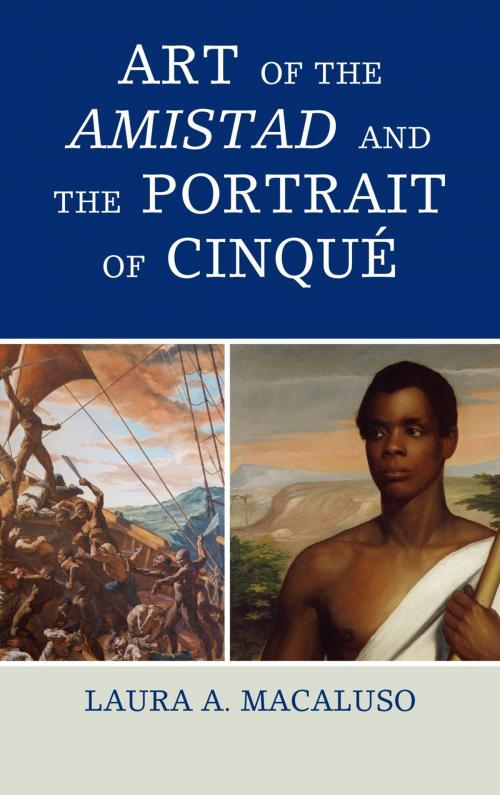Art of the Amistad and The Portrait of Cinqué
Nonfiction, Art & Architecture, General Art, Art History, Business & Finance, Industries & Professions| Author: | Laura A. Macaluso | ISBN: | 9781442253414 |
| Publisher: | Rowman & Littlefield Publishers | Publication: | March 23, 2016 |
| Imprint: | Rowman & Littlefield Publishers | Language: | English |
| Author: | Laura A. Macaluso |
| ISBN: | 9781442253414 |
| Publisher: | Rowman & Littlefield Publishers |
| Publication: | March 23, 2016 |
| Imprint: | Rowman & Littlefield Publishers |
| Language: | English |
The Amistad incident, one of the few successful ship revolts in the history of enslavement, has been discussed by historians for decades, even becoming the subject of a Steven Spielberg film in 1997, which brought the story to wide audiences. But, while historians have examined the Amistad case for its role in the long history of the Atlantic, the United States and slavery, there is an oil on canvas painting of one man, Cinqué, at the center of this story, an image so crucial to the continual retelling and memorialization of the Amistad story, it is difficult to think about the Amistad and not think of this image.
Visual and material culture about the Amistad in the form of paintings, prints, monuments, memorials, museum exhibits, quilts and banners, began production in the late summer of 1839 and has not yet ceased. Art of the Amistad and The Portrait of Cinqué is the first book to survey in total these Amistad inspired images and related objects, and to find in them shared ideals and cultural creations, but also divergent applications of the story based on intended audience and local context.
Tracing the revolutionary creation of what art historian Stephen Eisenman calls “a highly individualized, noble portrait of an African man,” Art of the Amistad and The Portrait of Cinqué is built around visual and material culture, and thus does not use images merely as illustration, but tells its story through the wide range of images and materials presented. While the Portrait of Cinqué seems to sit quietly behind Plexiglass at a local history museum, the impact of this 175-year old painting is palpable; very few portraits from the 19th century—let alone a portrait of a black man—remain a relevant part of culture as the Portrait of Cinqué continues to be today.
Art of the Amistad the Portrait of Cinqué is about the art and artifacts that continue to inform and inspire our understanding of transatlantic history—a journey 175 years in the making.
The Amistad incident, one of the few successful ship revolts in the history of enslavement, has been discussed by historians for decades, even becoming the subject of a Steven Spielberg film in 1997, which brought the story to wide audiences. But, while historians have examined the Amistad case for its role in the long history of the Atlantic, the United States and slavery, there is an oil on canvas painting of one man, Cinqué, at the center of this story, an image so crucial to the continual retelling and memorialization of the Amistad story, it is difficult to think about the Amistad and not think of this image.
Visual and material culture about the Amistad in the form of paintings, prints, monuments, memorials, museum exhibits, quilts and banners, began production in the late summer of 1839 and has not yet ceased. Art of the Amistad and The Portrait of Cinqué is the first book to survey in total these Amistad inspired images and related objects, and to find in them shared ideals and cultural creations, but also divergent applications of the story based on intended audience and local context.
Tracing the revolutionary creation of what art historian Stephen Eisenman calls “a highly individualized, noble portrait of an African man,” Art of the Amistad and The Portrait of Cinqué is built around visual and material culture, and thus does not use images merely as illustration, but tells its story through the wide range of images and materials presented. While the Portrait of Cinqué seems to sit quietly behind Plexiglass at a local history museum, the impact of this 175-year old painting is palpable; very few portraits from the 19th century—let alone a portrait of a black man—remain a relevant part of culture as the Portrait of Cinqué continues to be today.
Art of the Amistad the Portrait of Cinqué is about the art and artifacts that continue to inform and inspire our understanding of transatlantic history—a journey 175 years in the making.















